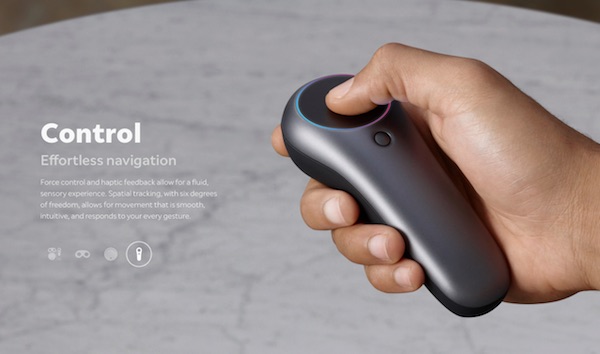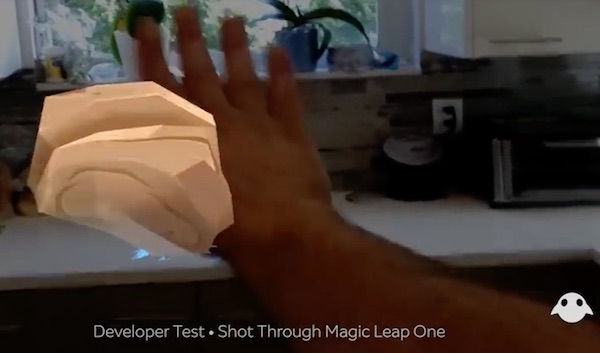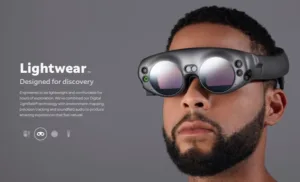Magic Leap has just announced that they will be shipping their Magic Leap One device to developers his summer. While this still leaves a significant time span for the actual release date, we are already in the summer of 2018 and the release could happen any day now. As the release will be to developers initially, consumers will have to wait some more time to find out when the device will be available and what the headset will cost.
Magic Leap One Headset
To facilitate the market introduction, Magic Leap has started to post YouTube videos that go into some detail of their hardware and software platform. The videos are somewhat game-centric as many software tools are focused on making game development easier and therefore faster. Nevertheless, the same tools can be used for developing productivity tools. The last version of the videos included the information about the hardware and software status can be found on YouTube.
The Magic Leap One is a headset with a tethered hip worn processor unit that keeps the system running while in use. Since this is a mixed reality device (or augmented reality depending on your definition) there is no limit to the space it can be used in.
 Magi Leap One Processing Unit
Magi Leap One Processing Unit
The processor unit is based on an Nvidia Tegra X2 SOC. They state that some of the cores are used to run the background system and two of the cores are reserved for the developers use. In addition one Denver core is available for math-heavy requirements.
The device allows for gesture input as can be seen in the video, nevertheless, the company’s website also shows a handheld input controller. The video does not go into detail on this device but focuses on gesture control instead.
 Magic Leap One Controller
Magic Leap One Controller
A big part of the video goes into how to include the user’s surroundings into the mixed reality, This is needed to create a connection between the computer generated part and our surrounding. In other words, any play time will not break reality as we perceive it but will use existing physical barriers as hard boundaries.
In their video they show a little guy throwing rocks at the user. As a result the user can get hit by the rock, doge the rock or block the rock with their hand. The game loop is also called dodge. So how good does this all look when recorded through Magic Leap One device? For starters very similar to other AR/MR/VR devices.
 Magic Leap One Doge Hand Block
Magic Leap One Doge Hand Block
The details are difficult to judge as they are shown on a 2D screen. The first impression is that they are pretty good at blocking the background (the real world) from shining through the computer generated object. In all fairness they use a relatively dark background and a bright object twirling at the viewer. Throwing something dark from a bright background may be less forgiving.
On the other hand ,the picture also shows the limitations of the software. If the hand is blocking the rock it does not seem that it worked, however in the video the rocks is destroyed shortly after it passes through the hand. Not quite real, yet.
As for more information about the used display technology,we still have to live with the great description of “Digital Lightfield” and whatever that means. The description goes as far as stating that the digital light comes from different depths and blends seamlessly with the natural light. So they create images at different depth to make using the Magic Leap One more comfortable for the brain. Once the units come on the market we will learn more about the secret display technology Magic Leap claims they created. So far they have proven that they can keep a secret a secret, but the truth will be out soon.
Analyst Comment
After spending a incredible amount of money on development, we should expect something extraordinary. So far these demonstration do not really live up to the hype. The presented images are very comparable of what you can find in the Microsoft HoloLens and it will be interesting to learn how they spent their billion dollar of development money. More interesting will be to see how they will recoup this money going forward. As of yet, I have not seen anything above and beyond what we have seen from other developers all of whom have not been very successful in the consumer market. I guess it is the hope that one the developers who are getting their hands on the new device will have such an epiphany and ring in the new age of mixed reality. (NH)

